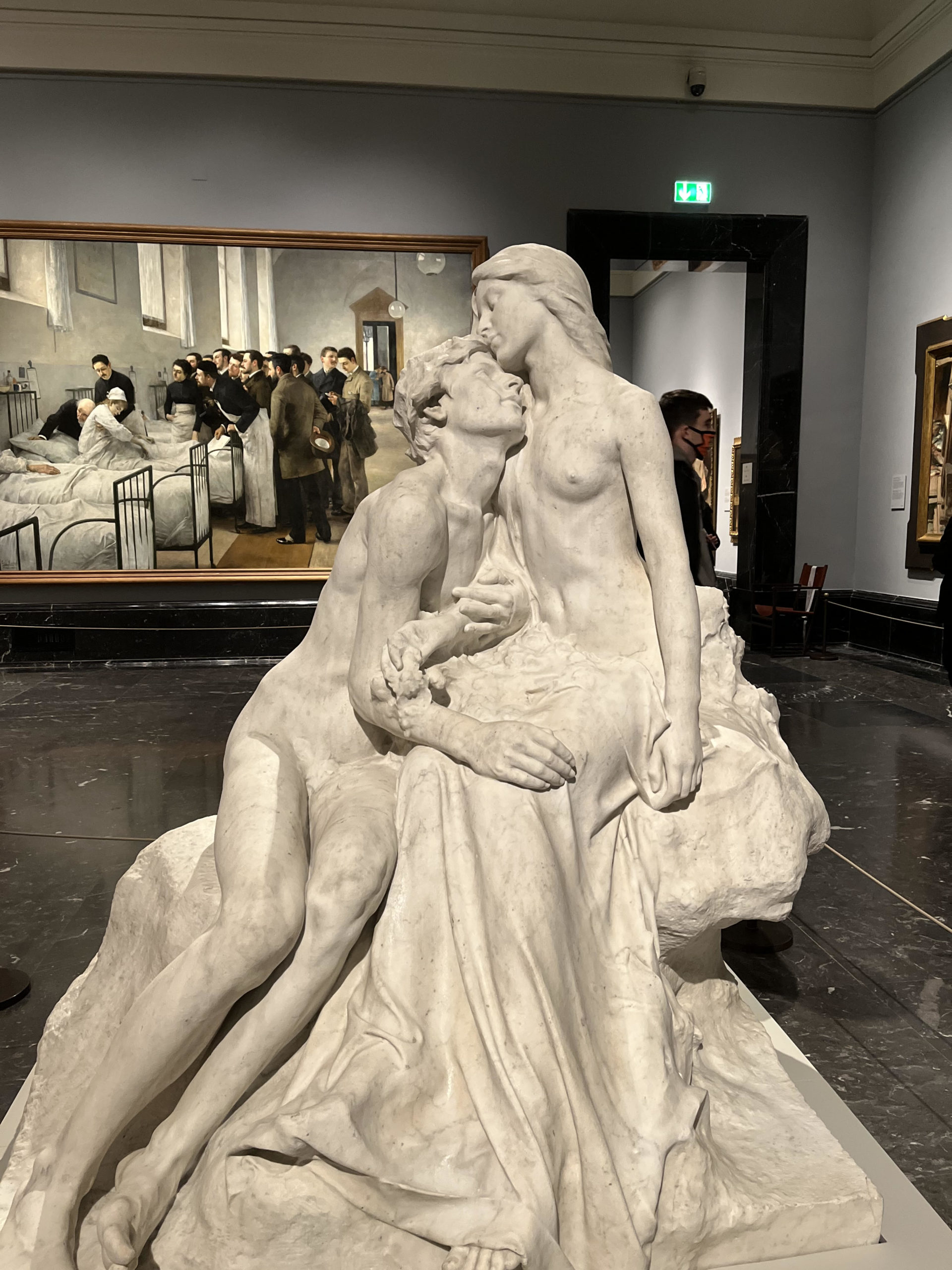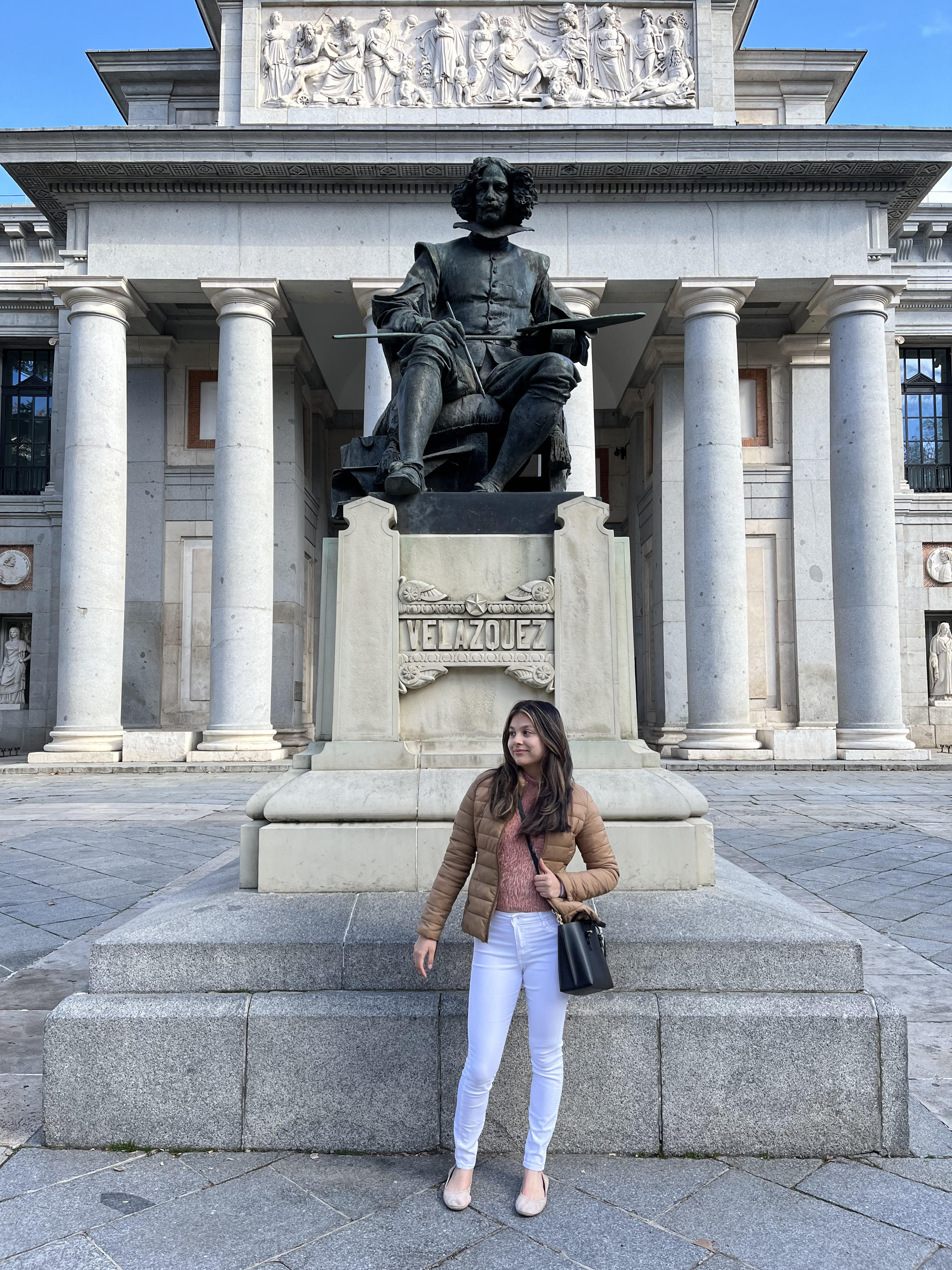
The Art and the Artist
Once again this week, my Spanish Culture and History class has inspired me to explore in real life what I learn in class. What influenced this week’s blog all started with learning about the different Kings that ruled Spain. There was one specific King that stuck out to me the most, which was Felipe the fourth. Felipe the fourth was very interesting to me because I admired that he appreciated art and what it meant to be a “painter” at a time in Spanish history when it was looked down upon in society. Additionally, we learned he was very close friends with a now famous painter by the name of Diego Velazquez, who is now admired by many artists in the world. We saw some of Velazquez art and analyzed the meaning of his paintings in class, however I wanted to see them up close for myself so I decided to go to the Prado museum.
When I arrived at the Prado museum, I was not expecting the museum to offer a self audio guide which you could listen to with your headphones and offer an explanation of the art for each room. I know this may be trivial to some people, but it was a really amazing experience and I had not seen any museum do something like that in the United States. Additionally, there were many different people around me who were admiring the art, speaking in different languages and it was truly amazing to see the diversity. I believe that this is because art is a visual language and no matter where you come from you can always interpret a drawing or a painting. This was one of Velazquez’s main philosophies and motives for making art; he wanted people to think and find a story from his paintings which is why I wanted to see his paintings at Prado for myself.
In class the main two paintings by Velazquez that we discussed were “Las Meninas” and “Portrait of the Jester”, and I was able to see them both at El Museo del Prado. I really wanted to see “Las Meninas” because I learned how deep the significance of the painting was at the time that it was created. The painting has young ladies in waiting surrounding the princess of Spain with a bodyguard, nun, and a dog in the background. At first glance in class, I really didn’t think much of the painting until my professor explained it to me. My first thought was that Velazquez was in that room painting all the events and people that were in “Las Meninas”. However, my professor explained that the portrait was completely made up. He painted that image straight from his own imagination. The painting is an idea being represented, not necessarily something being created from reality. Additionally, my professor explained that it humanized the young princess. We see her as a simple child going about her day, and not someone who is in a position of power or importance. The other painting that we discussed was the “Portrait of the Jester”. Velazquez paints a portrait of the King’s jester who is a dwarf. However, he does not paint him any less dignified than he would a person of the noble court. He has the jester in red, which symbolizes power during this time and gives his eyes life. I also really enjoyed seeing this painting for myself in person, seeing an image through the computer does not do it justice. I hope I can continue to see more museums with deep history during my time here in Spain.

